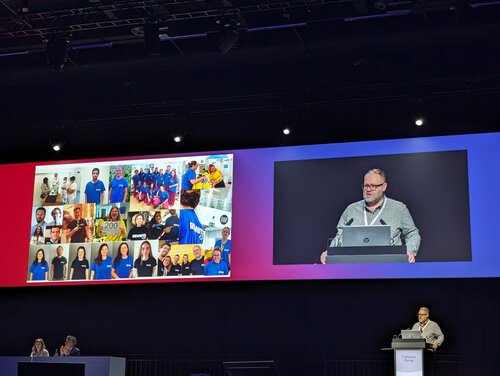The Lleida Stroke Team demonstrates for the first time the positive effect of an ambulance technique to improve patient prognosis
Remote ischaemic tolerance (TIR) consists of 5 cycles of 5 minutes compression and 5 minutes decompression in the arm not affected by stroke
The Stroke Team at the Arnau de Vilanova University Hospital in Lleida (HUAV), together with the Neuroscience Group of the Institute for Research in Biomedicine (IRBLleida) and the Medical Emergency System (SEM), presented the results of the REMOTECAT study within the framework of the 10th European Stroke Organization Congress in Basel (Switzerland).
This is a patient-centered trial that is activated by the stroke code, with an ischaemic stroke (caused by an obstructed artery), which receives brief episodes of compression in the arm in order to increase intracranial circulation in the first moments. It is a safe, simple and low-cost therapy that helps improve medical care before the patient reaches the emergency service of a hospital.
The study analyses the effect of remote ischemic tolerance (TYR) on these patients. TIR consists of the application of 5 cycles of 5 minutes of compression and decompression (of 5 minutes each) to the arm not affected by stroke. This intervention aims to enhance the innate capacity of the human being to defend himself from cerebral ischaemia, which in normal conditions has a only transient effect. The study is very relevant because it has allowed to include 200 patients, with the collaboration of three other Catalan hospital centers: the Vall d'Hebron University Hospital, the Moisès Broggi Hospital and the Bellvitge University Hospital, and the Medical Emergency Service.
Francesc Purroy, head of the HUAV Neurology Service, professor at the Faculty of Medicine of the University of Lleida (UdL), and leader of the Clinical Neurosciences Group and principal investigator of the project, presented the results. For the first time it is shown that this therapeutic strategy is effective in a specific group of patients, patients with less severe symptoms who have spontaneously been re-analysed by the oclose intracranial artery.
Purroy states that "it is a great satisfaction to be able to get here. Completing an academic study is a great effort. We are very happy to have been able to demonstrate that remote ischaemic tolerance is beneficial in a specific group of patients, patients with less severe symptoms." He also says that "the study is of enormous interest, since it has been done with the collaboration of health emergency technicians (TES), who are the first to treat patients with stroke code. Likewise, the participation of the SEM Health Coordination Center (CECOS) has been fundamental."
According to Tere Subirats, head of the CECOS room of the SEM in Reus, "the participation in this clinical trial, in collaboration with the participating hospitals has been a challenge and a great satisfaction and has allowed us to include a research project within the framework of assistance to people affected by a stroke. This is very relevant given the high prevalence of this pathology that affects around 10,000 people every year in Catalonia, 65% of whom are initially cared for by SEM".
The study has been carried out with funding from the Carlos III Health Institute and with the support of a PERIS grant from the Generalitat de Catalunya. The research is possible thanks to the grants of the Agency for Management of University and Research Grants (FP: 2017 SGR 1628), the Carlos III Health Institute, the European Union (ERDF A way to make Europe), (FP: Project PI17-01725) and RICORS, Brain Vascular Disease Network.
Although the results should be validated in new studies, REMOTECAT represents a great advance towards a line of research that promotes the innate capacity that every person has to defend themselves from cerebral ischaemia.
Diamant Award
During the Congress held in Switzerland, the Lleida Stroke Team also received the Diamant Award, which is the highest distinction society makes for the care of patients with stroke in the Hospital.
On the other hand, the Clinical Neurosciences Group has presented the results of another intervention trial, the LLETIS study, with the collaboration of primary care, in which it is demonstrated as an intensive action on risk factors and compliance with treatment improves the prognosis of patients after 10 years of follow-up. In addition, the preliminary results of a pre-hospital clinical scale have also been presented to detect, in the first care for the ambulance, patients who have intracranial hemorrhage, with respect to those who have an ischaemic stroke (obstructed artery). Likewise, the aim of this study was to disseminate the results of the oval foramen permeable in patients with ischaemic stroke at the Hospital. Finally, the epidemiological results on the incidence of perinatal and pediatric stroke in Catalonia have been presented.

They present the results of the study at the 10th European Congress of stroke, held in Basel






